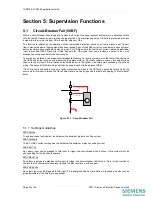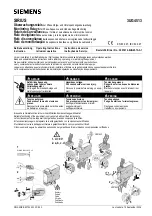
7SR210 & 7SR220 Applications Guide
The relay closest to the fault (D) would step through its Instantaneous Trips in an attempt to clear the fault. If
unsuccessful, the relay would move to a Delayed Trip sequence.
The other relays in the network (A, B and C) would recognise the sequence of Pick-up followed by current switch-
off as ARC sequences. They would therefore also step to their Delayed Trip to retain co-ordination with the
respective downstream devices.
The next Trip would be subject to current grading and Lockout the ARC sequence such that the fault is cleared by
the correct CB.
4.1.1 Auto-Reclose Example 1
Requirement: Settings shall provide four phase fault recloses – two instantaneous and two delayed - and only two
recloses for faults detected by the SEF protection.
Proposed settings include:
CONTROL & LOGIC > AUTORECLOSE PROT’N:
79 P/F Inst Trips: 50-1
79 P/F Delayed Trips: 51-1
79 SEF Delayed Trips: 51SEF-1
CONTROL & LOGIC > AUTORECLOSE CONFIG
79 Num Shots: 4
CONTROL & LOGIC > AUTORECLOSE CONFIG > P/F SHOTS
79 P/F Prot’n Trip 1 : Inst
79 P/F Prot’n Trip 2 : Inst
79 P/F Prot’n Trip 3 : Delayed
79 P/F Prot’n Trip 4 : Delayed
79 P/F Delayed Trips to Lockout : 3
CONTROL & LOGIC > AUTORECLOSE CONFIG > SEF SHOTS
79 SEF Prot’n Trip 1 : Delayed
79 SEF Prot’n Trip 2 : Delayed
79 SEF Delayed Trips to Lockout : 3
Note that Instantaneous’ shots are inhibited if the shot is defined as ‘Delayed’
©2011 Siemens Protection Devices Limited
Page 31 of 40










































